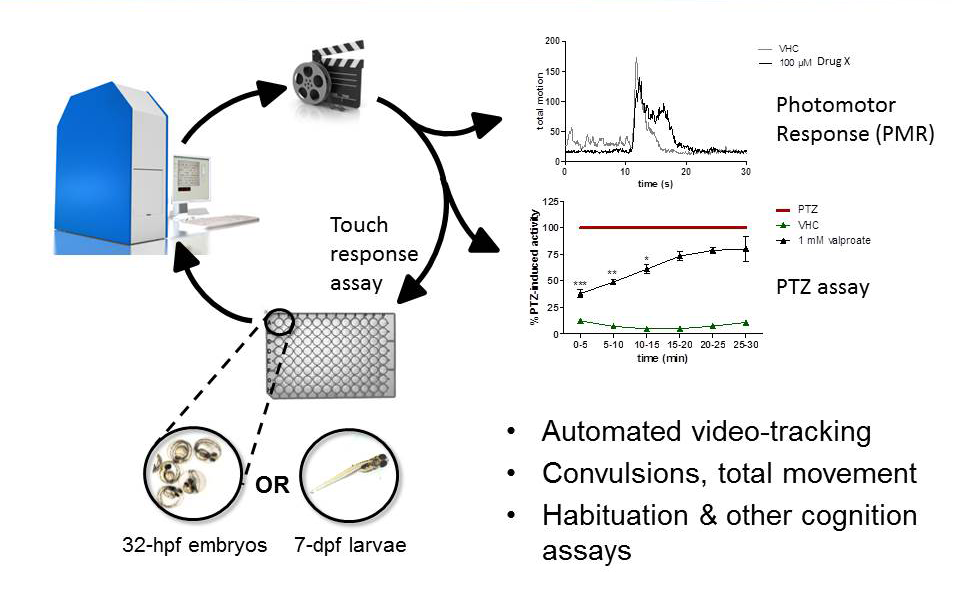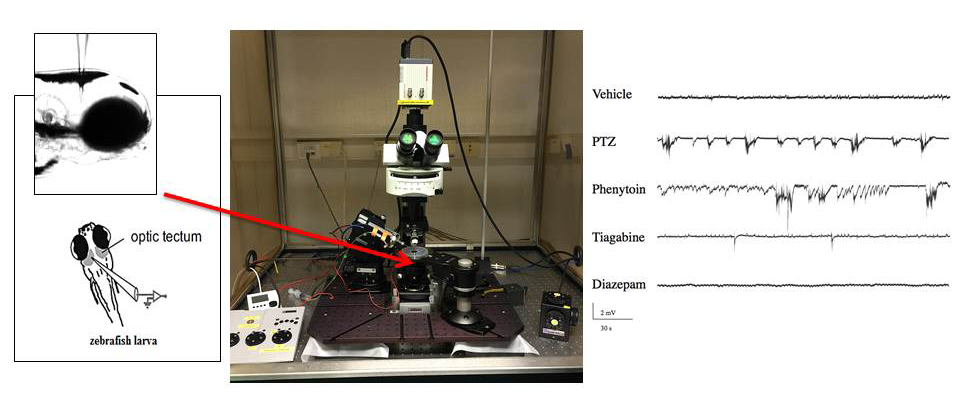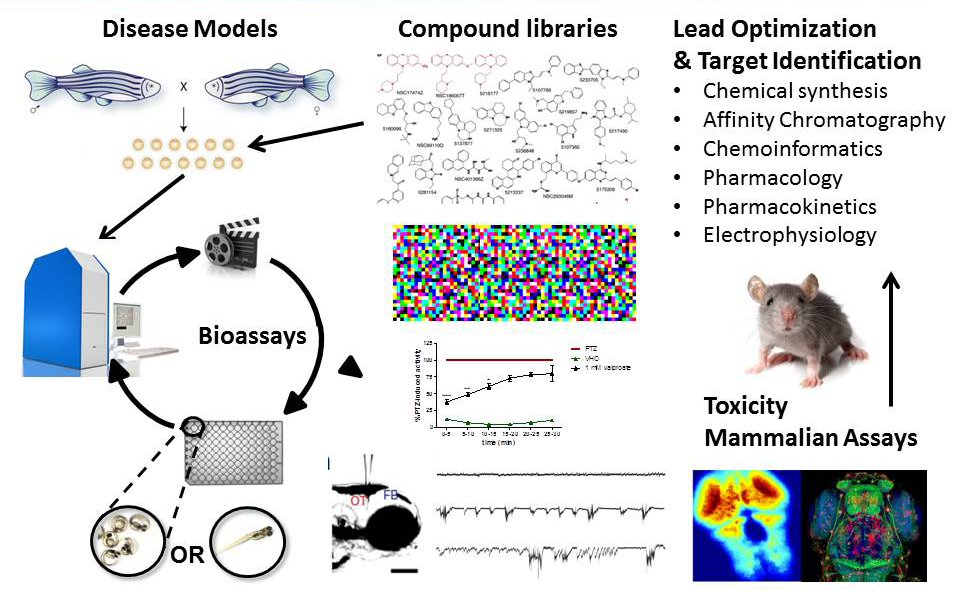Behavioral analysis

Automated behavioral tracking systems and analysis software are used to quantitatively assess zebrafish embryonic or larval locomotor activity and seizure-like behavior in multi-well format.
Electrophysiology
- Local Field potential recordings (LFP)
- ictal, interictal discharges, spontaneous burst activity
- Spectral analysis
- categorize spiking patterns, HFOs (high-frequency oscillations)

Electrophysiological analysis, through local field potential recordings are performed to detect epileptiform brain activity. Recordings are performed using fully intact zebrafish larvae (i.e. no need to open cranium) embedded in agarose.
Chemical Neuroscience Program

Chemical modifier screens using drugs and small-molecule compound libraries such as the LOPAC library of 1280 pharmacologically active compounds and other commercially available libraries at NCMM will initially be used. Beyond these libraries, collaborations with chemists to synthesize and screen drug-like, structurally diverse small molecules as well as biodiscovery efforts to identify neuroactive natural products within Norway and Europe will also be carried out.